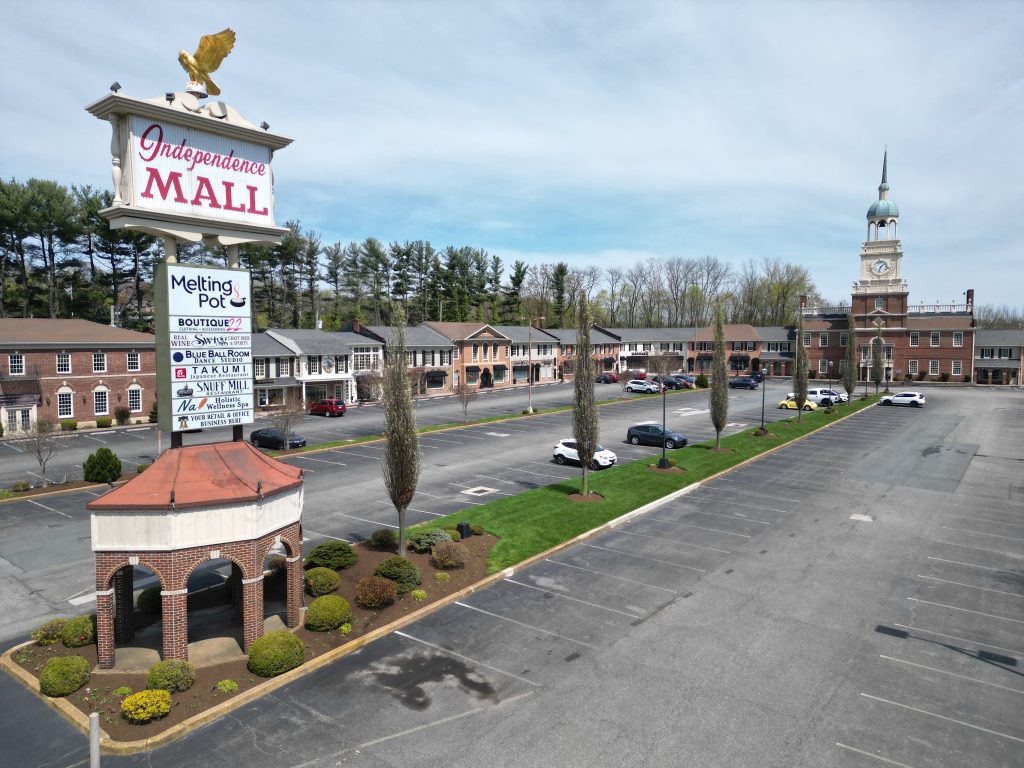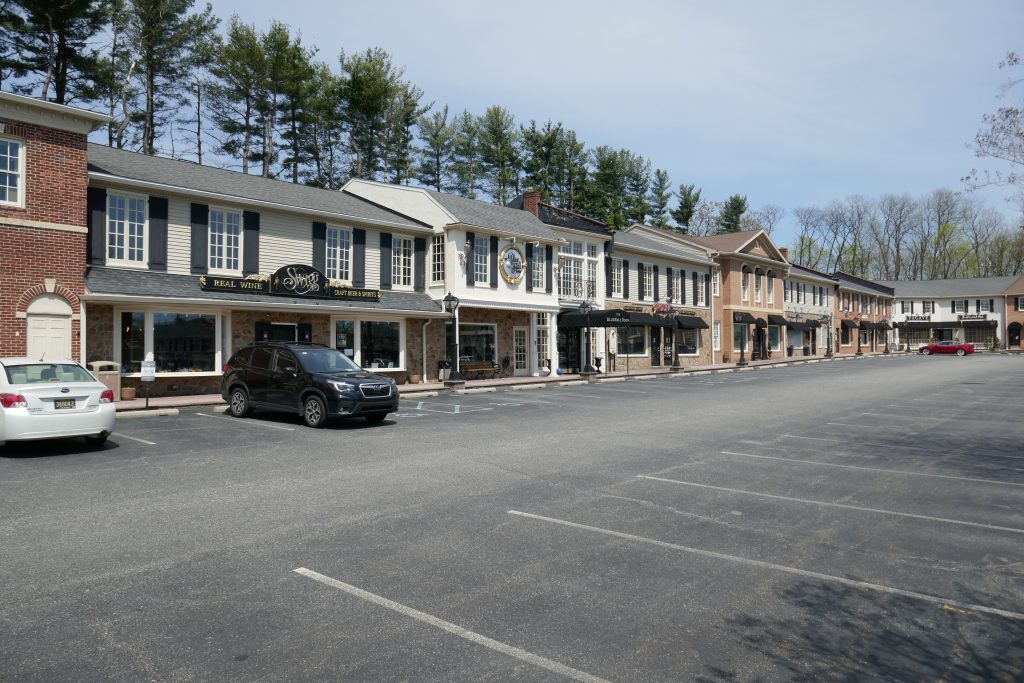Independence Mall listed in the National Register of Historic Places

On June 3, 2025, Independence Mall along Concord Pike in northern Delaware was listed in the National Register of Historic Places for its local significance associated with architecture and commerce. In addition to the property’s association with commercial shopping activity during the post-war years of the 20th century, Independence Mall is only one of 37 known reproductions of Independence Hall nationwide.
Designed by local developer Emilio Capulia, Independence Mall was constructed between 1964 and 1965 and exemplifies a post-World War II, suburban, automobile-centric shopping center. Independence Mall is a 12-sided, two-story, frame shopping center with various exterior finishes, giving it a discontinuous “colonial village-like” feel. The U-shape footprint of the shopping center offers an interior-parking forecourt, highlighting the commercial and architectural influences of shopping during the early 1960s and Early American design, an architectural style popularized in the post-World War II era that typically includes classical elements such as cupolas or bell towers, decorative cornices, sash windows, door surrounds and traditional building materials.

In his design of Independence Mall, Capulia took the premise of replica culture one step further, as the surrounding buildings in the shopping center are modeled after other historically significant buildings in Philadelphia to offer visitors a “village-like” shopping atmosphere. Other replicas within the Independence Mall shopping center include the Betsy Ross House, Library Hall and Carpenter’s Hall. This phenomenon of replica culture spoke to Early American design and collective, community memory through architectural trends.
To learn more about the history of Independence Mall, read the full nomination here.
This National Register nomination was prepared by the University of Delaware’s Center for Historic Architecture and Design on behalf of New Castle County. This work was supported by the Historic Preservation Fund sub-grant program for certified local governments, managed by the Division of Historical and Cultural Affairs’ State Historic Preservation Office.


